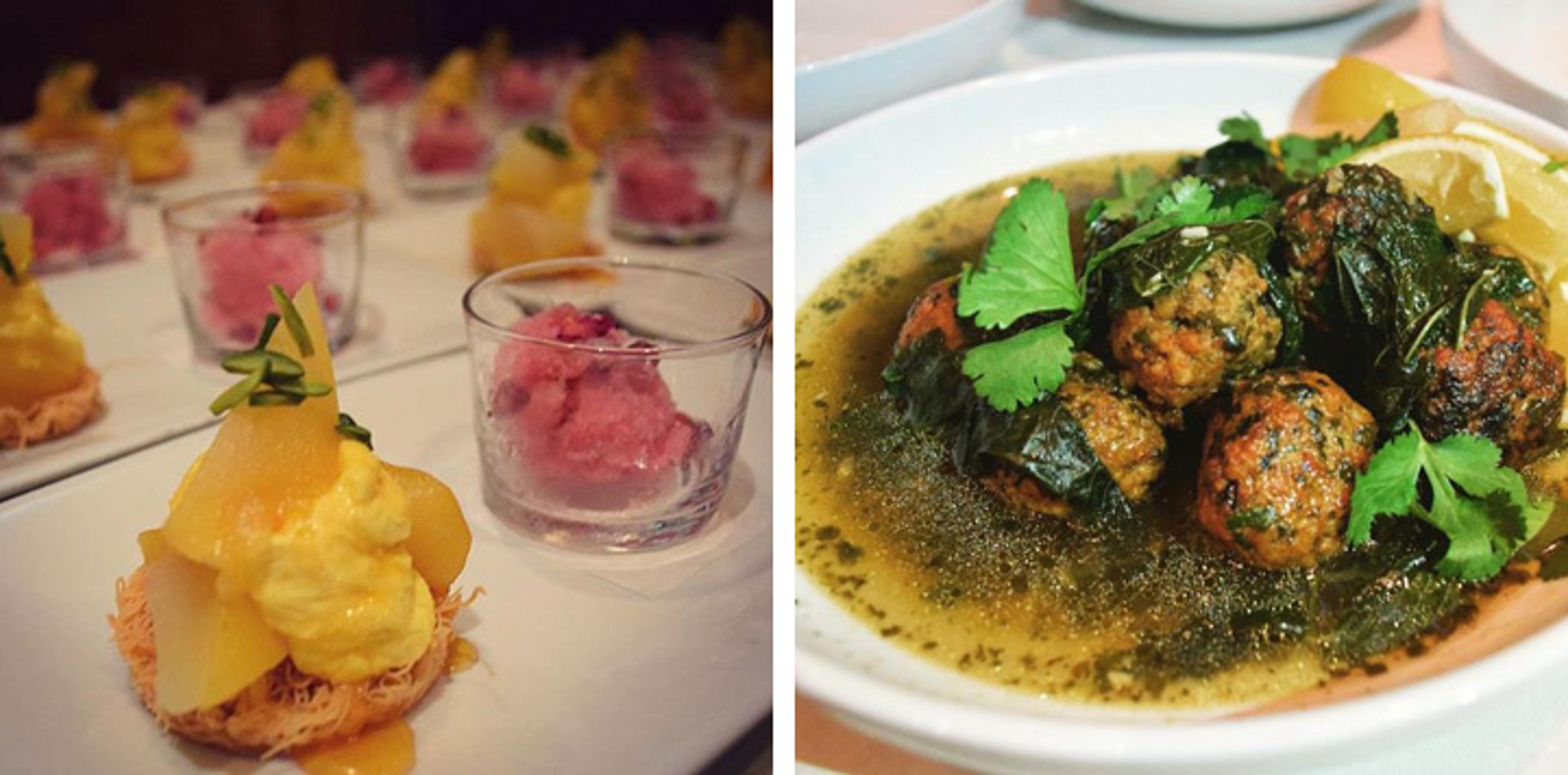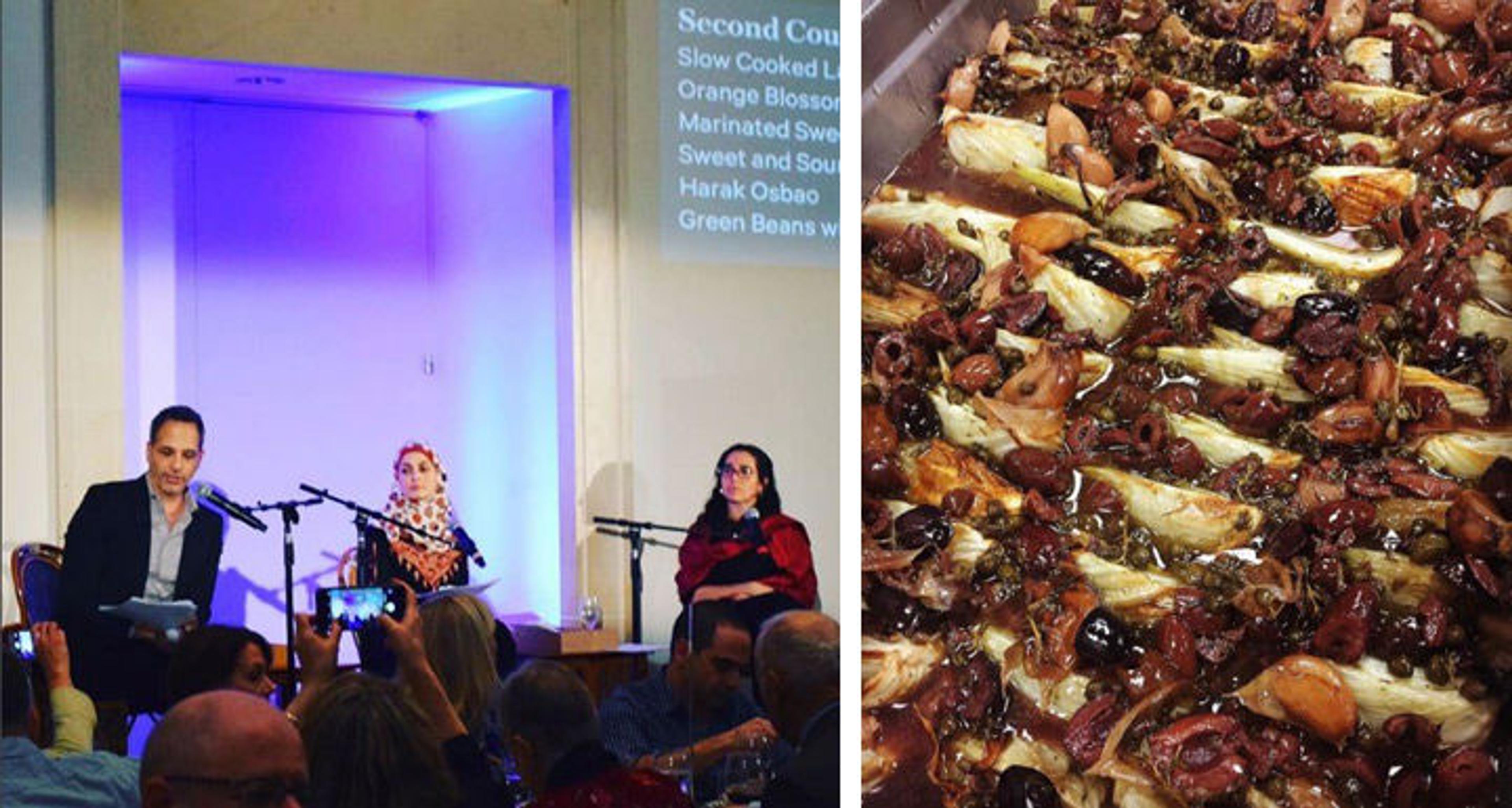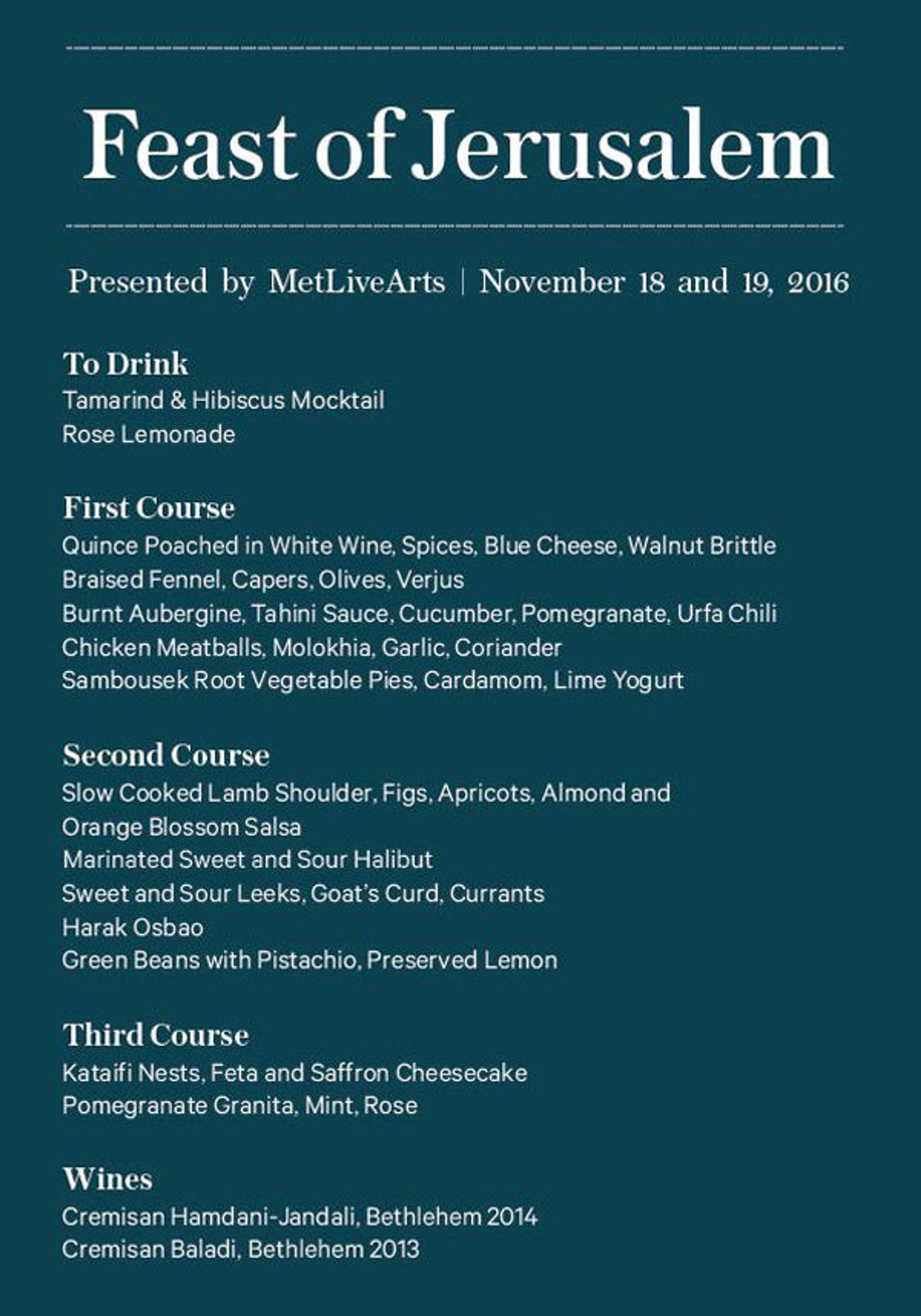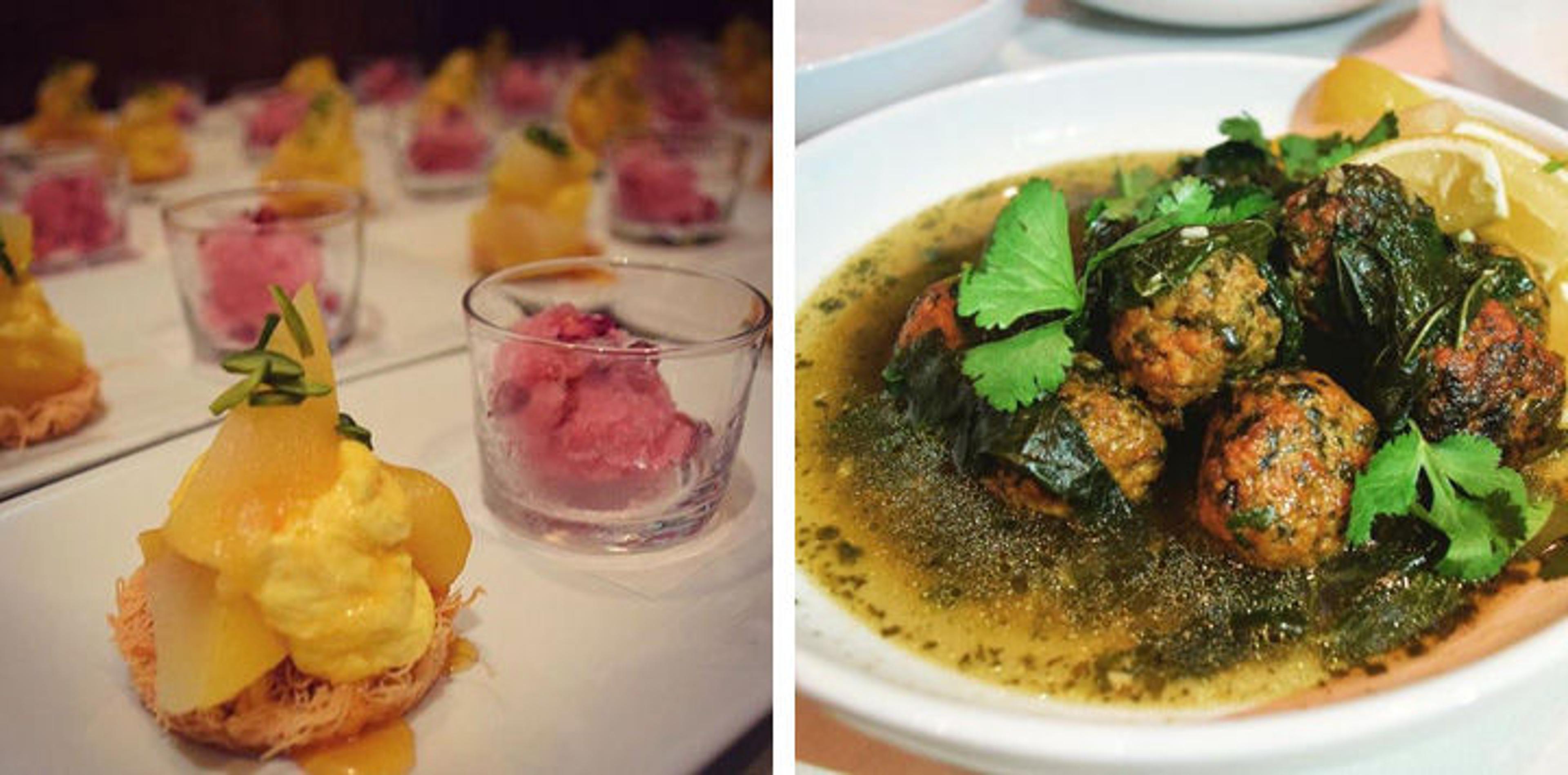
Two of the dishes served at the MetLiveArts event Feast of Jerusalem. Left: Chicken meatballs with molokhia, garlic, and coriander. Right: Kataifi nests with feta and saffron cheesecake and a pomegranate granita with mint and rose. All photos courtesy of Yotam Ottolenghi (@ottolenghi)
On the evenings of November 18 and 19, MetLiveArts took a giant leap out of the box with a hybrid event that featured both a discussion and a meal inspired by the exhibition Jerusalem 1000–1400: Every People Under Heaven. The Feast of Jerusalem event included a menu by the star chef, food writer, and restaurateur Yotam Ottolenghi (author of Jerusalem: A Cookbook) and writers Laila El-Haddad and Maggie Schmitt (co-authors of The Gaza Kitchen: A Palestinian Culinary Journey). While guests enjoyed a hafla (family-style meal), Ottolenghi, El-Haddad, and Schmitt shared their fascinating insights, highlighting the deep relationship between the cuisine and the rich culture and history presented in the exhibition.
The three chefs determined which influences to showcase from the vast cultures of the city of Jerusalem, and the banquet they created for the event—not to be confused with everyday cuisine—was a sumptuous three-course meal. Throughout the evening, our hosts shared historical commentary about each dish, its preparation, and even its social significance. Here are just a few points that translate the culinary traditions of the region and the cultural landscape.
An Emphasis on the Sweet-and-Sour Dynamic
One of the dishes on the menu was marinated sweet-and-sour halibut, which chef Yotam Ottolenghi explained as a complex flavor that is not very common in American or European cuisine. It was a taste profile that was prevalent in the medieval era and then disappeared for some time. It is highly prized in the Gaza region, however, where cooks continually challenge themselves to make a dish more sour.

Left: Ottolenghi, El-Haddad, and Schmitt speak to the audience about the various dishes. Right: Braised fennel with capers, olives, and verjus
The Importance of Spices
"Spices are like currency," Maggie Schmitt commented. "It's like eating money." The rich spices of the region became a symbol of opulence, extravagance, and generosity. The notion that spices were used to cover up rotten meat is entirely false, she stressed; fresh meat was abundantly available. The use of spices was truly about prominence.
The Indulgence of Sugar
The dessert course was an opportunity for the hosts to dive into the use and significance of sugar. In that region, sugar was grown in the marshes of southern Iraq. In addition to its obvious uses in desserts (the menu featured kataifi nests with feta and saffron cheesecake and a pomegranate granita with mint and rose), it is also regarded as an indication of warmth and hospitality in social interactions. "The sweeter the tea, the more generous the host," Laila El-Haddad shared as a well-known custom practiced to this day.
To experience the truly dynamic history and cultures of Jerusalem, be sure to visit the exhibition Jerusalem 1000–1400: Every People Under Heaven, on view at The Met Fifth Avenue through January 8, 2017.

Related Link
Now at The Met: "Mapping the Medieval City—Jerusalem 1000–1400: Every People Under Heaven" (October 28, 2016)
